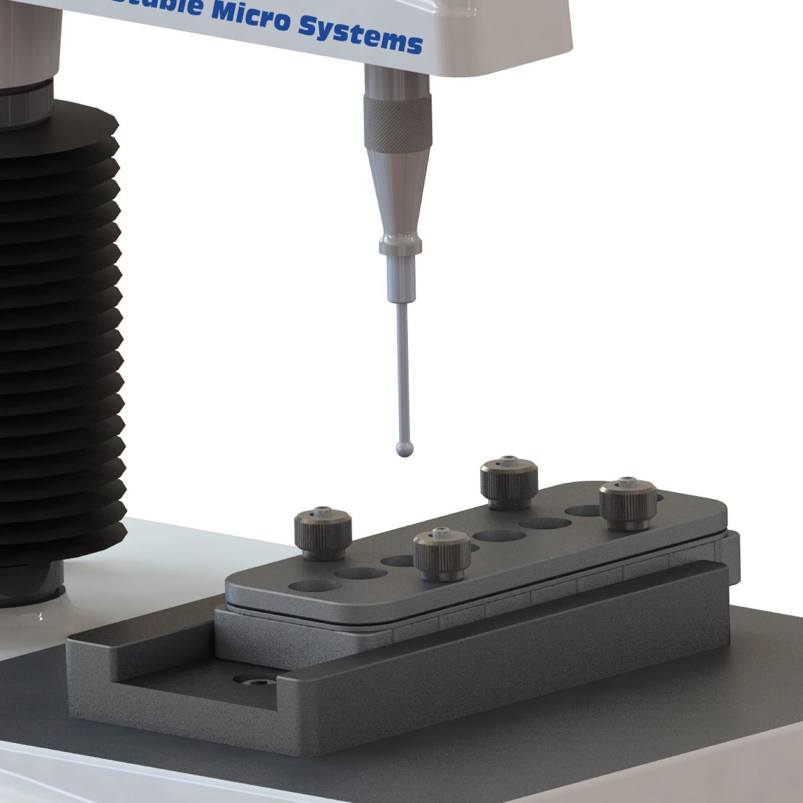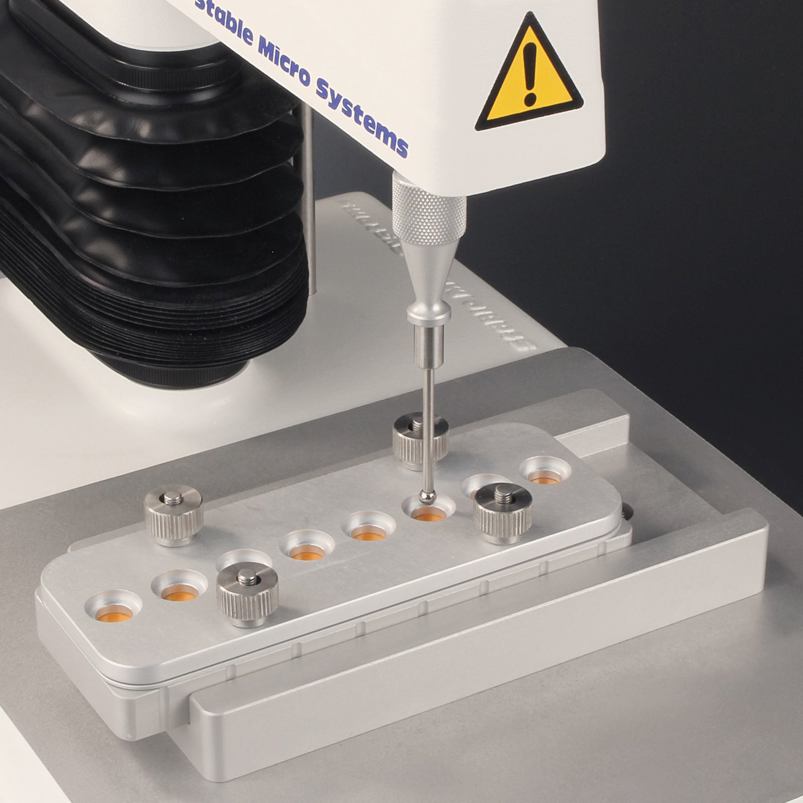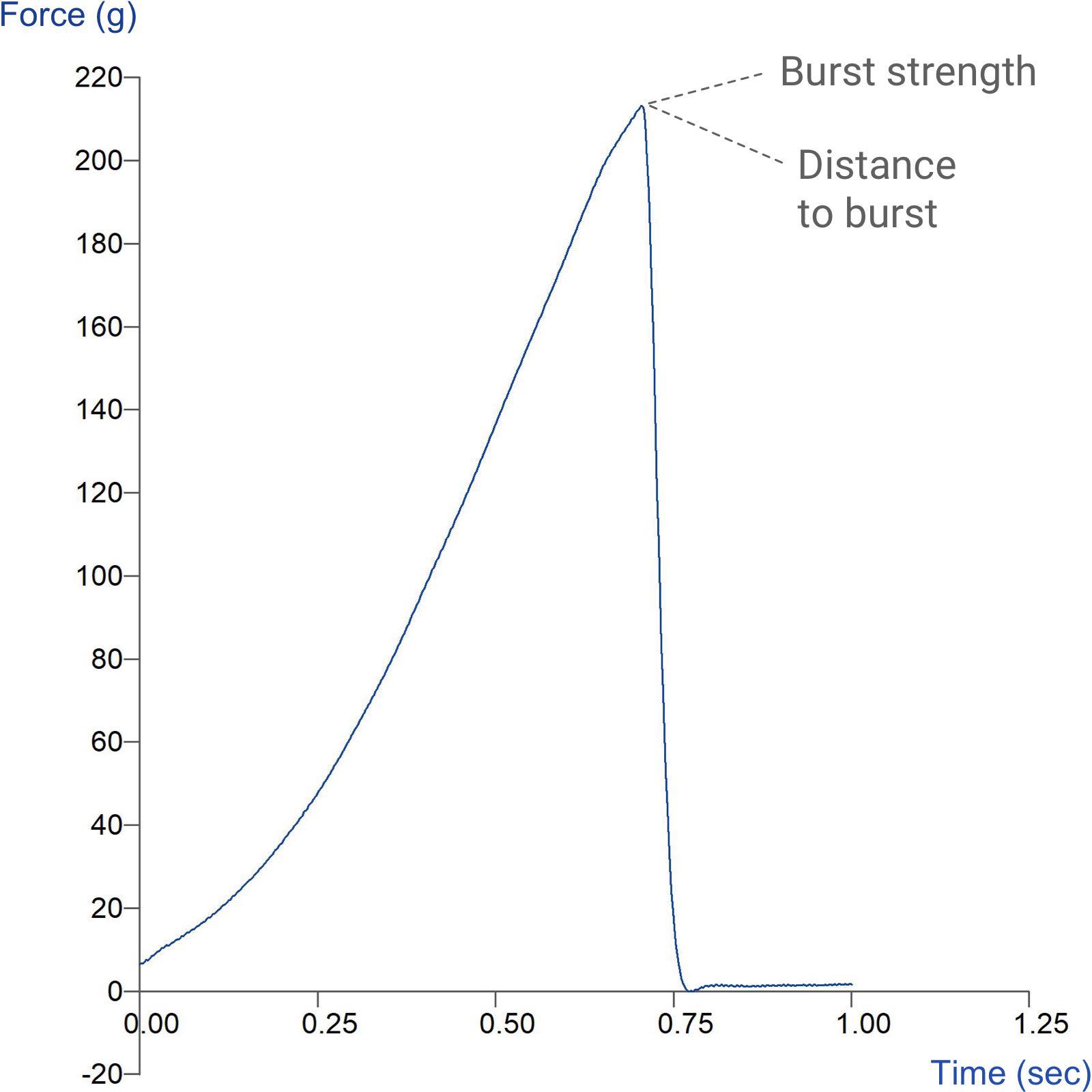Product overview
A wide range of pharmaceutical products, particularly plasters and bandages, are designed to be extremely thin, increasing comfort and ease of storage or use. Other films are designed to dissolve on the tongue. While maintaining the characteristics of thin and delicate, the products must also be strong enough to resist breakage when handled and applied by consumer or professional, and also during use. With the Indexable Film Support Rig, manufacturers can identify weaknesses within their product lines and adjust and structure accordingly.
The Indexable Film Support Rig which was developed as a test for measuring the resilience of thin, film-like products and is used in conjunction with the Texture Analyser to measure the burst strength and resilience of a variety of personal care and pharmaceutical products including oral hygiene strips, plasters, bandages, polymer film, micropore tape, synthetic skin and latex, amongst other 'edible film' applications finding their way into the food industry.
Prior to performing the test, the sample is placed over a hole with a top plate that prevents the sample from slipping during testing. The test is then carried out as the arm of the Texture Analyser brings a 5mm stainless steel ball probe down into the aperture. The maximum force to rupture the sample is recorded and is referred to as burst strength. By way of increasing useability and efficiency the Indexable Film Support Rig allows the setup of multiple film samples ready for testing. Once the first sample is centralised with the testing probe, subsequent samples can simply be moved along via a 'quick-click' mechanism which aligns the next test ready to go, thereby increasing sample throughput.
The resilience and relaxation properties of the product can also be measured. Resilience can be assessed by depressing the film surface to a chosen distance before retracting the ball probe. The property is calculated using a ratio of the work of compression and work of withdrawal. Similarly, relaxation can be measured with the addition of a hold period within the test to allow the product's recovery to be evaluated. Both these properties broaden the application of the Indexable Film Support Rig. Burst strength, resilience and relaxation are important factors in determining the mechanical properties of a product, allowing manufacturers to optimise product structure and formulation.
Using the Indexable Film Support Rig, film manufacturers can improve the speed that they assess the mechanical properties of their products during packaging and handling, ensuring that they are adequately robust.
How does the Indexable Film Support Rig work?
Ideal sample form
A thin or film-like material which can be successfully mounted without failure or major deformation over an aperture.
Benefits and limitations
- Two sample support options are offered depending upon sample flexibility
- Allows a simple test to be performed with increased efficiency
Technical information
Installation
Full installation instructions are provided within the Education Zone of the latest Exponent/Connect software version and on the technical information sheet accompanying this product.
Chemical compatibility
Stable Micro Systems probes and attachments are commonly made from four materials: anodised aluminium (AA6082 T6), stainless steel (316 T), Delrin (acetyl copolymer) and Perspex (polycarbonate).
In general use, probes and attachments made from these materials will be suitable for testing food products and inert non-food materials.
The four materials listed above are not universally resistant to all types of chemicals and as such the compatibility of the probe/attachment material with the product (to be tested) must be established to prevent damage to the probes and attachments. If the compatibility of the product with the probe is unknown to the customer then the chemical information about the product (Material Safety Data Sheet or Product Data Sheet) should be submitted to Stable Micro Systems. Stable Micro Systems will then assess the suitability of the probe/attachment material for use with the product and advise accordingly. If this advice is not sought then Stable Micro Systems will not accept liability for probes/attachments damaged by chemical attack from the product being tested.
Cleaning and maintenance
All probes and attachments may be cleaned in warm (or hand hot) water using a mild detergent. A soft brush may be used but abrasive cleaning aids should be avoided. Stable Micro Systems products should not be microwaved or cleaned in a dishwasher.
Screw threads should be lightly lubricated after drying using a light lubricant, e.g. petroleum jelly, mineral oil. This will aid the fitting and unscrewing of the item. Each component of a probe or attachment should be wrapped separately when stored, to avoid scratching or chipping. This will safeguard against any unnecessary damage to the accessory.



